Weighing the old bells out of a church must have been an exciting event in thousands of churches throughout the country over many hundreds of years. Today this weighing is done as the bells arrive at the bellfoundry, with mutual trust between the parties. The cost of bronze(30% tin 70% copper) now and in ancient times was always high, so the exact weight is required especially when the old bells were weighed out of the church. A bell could weigh as much as 1.5 tons. In 1722 the cost of the old bronze going out to be recast was 10d a pound weight charged to the bellfounder. When the bells came back they were valued at 12d per pound. If the weight was over what was taken away the bellfounder gained or visa-versa. The bellfounder also received his contract price. One can imagine the excitement for the locals concerned as the bells that had sometimes been up in the tower or spire for hundreds of years were being lowered and now on view on the church floor. At the time of Henry Penn these bells may have been pre-reformation. The contract between the bellfounder and the parish would normally require that the bells be weighed before transportation to the foundry. This weighing equipment was not always available locally. At Croft, Lincolnshire the documentation states that the bells are to be weighed at Boston with the trades and weights to be found and provided by Henry Penn. At Yardley Hastings in Northamptonshire the church wardens accounts for 1722 say, for fetching a Beame, Scales, and Weights, from Ashby for weighing the bells and carrying them beck again 5s. The beam used must have been quite substantial in size. Finding an early photograph of the Blue Lion at King’s Lynn in the local Library gave him and his wife Ann the opportunity to investigate if these devices were similar to the steelyard.
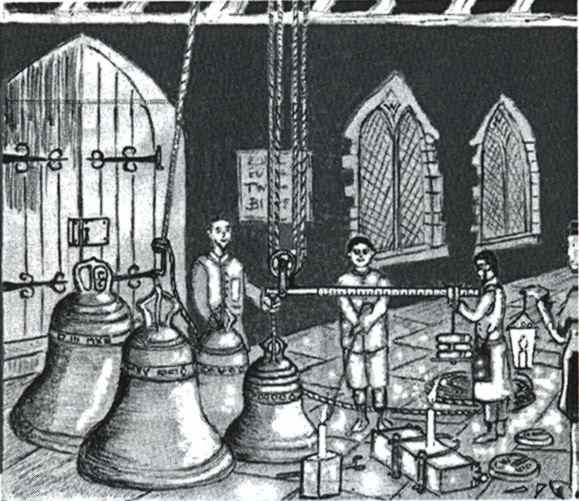
Drawing by the writer on his idea of weighing in and weighing out. The steelyard is attached to the lifting gear which had been used to lower the bells to the floor.
Was there anything out there?
This is not an argument about the name of a type of weighing machine, steelyard, beam or otherwise. We will use the word steelyard, in this case a machine so ancient that it deserves recognition. Whilst the writer was looking at the weighing machine at King’s Lynn in Norfolk he found that only one more like it exists in its original position in this country and how it was in danger.
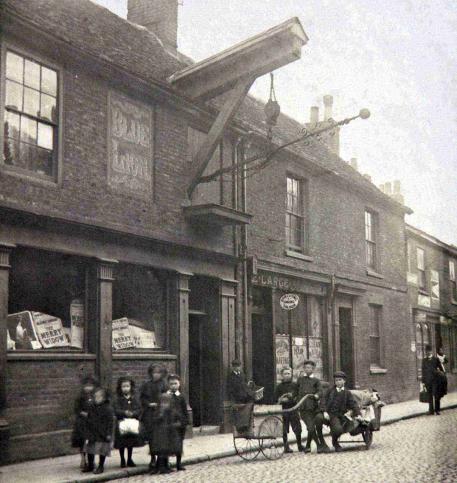
Ten little souls stand watching a photographer as if to say ‘what are you doing here.’ He is saying ‘do you want your photo taken? You will have to stand very still and watch the dicky bird.’ Some did not stand still and are blurred. Among the 10 children are 4 boys near to the door. One with a basket and two others with hand carts. It is possible that they were part of Andrew Burley’s goods care and dispatch team in the town at this time. Five stood still and they appear quite clear but the others moved and they look like small out of focus ghosts. A lovely little girl stands in the centre of the other group clutching what looks like a ladies handbag. They all look well dressed with white collars. A man is standing on the neatly cobbled street with a bowler hat, case and coat over his arm. A lady looks at the complete party from her shop door in the distance. The machine was dismantled in 1913 and the mechanism was subsequently removed to the Greenland Fishery Museum.
The King’s Lynn steelyard.
The steelyard/weighing machine would have been used for all types of heavy goods but they were mainly for lifting and weighing wagons or carts and the loads they carried. It was June 2009 when my wife Ann and I visited King’s Lynn.
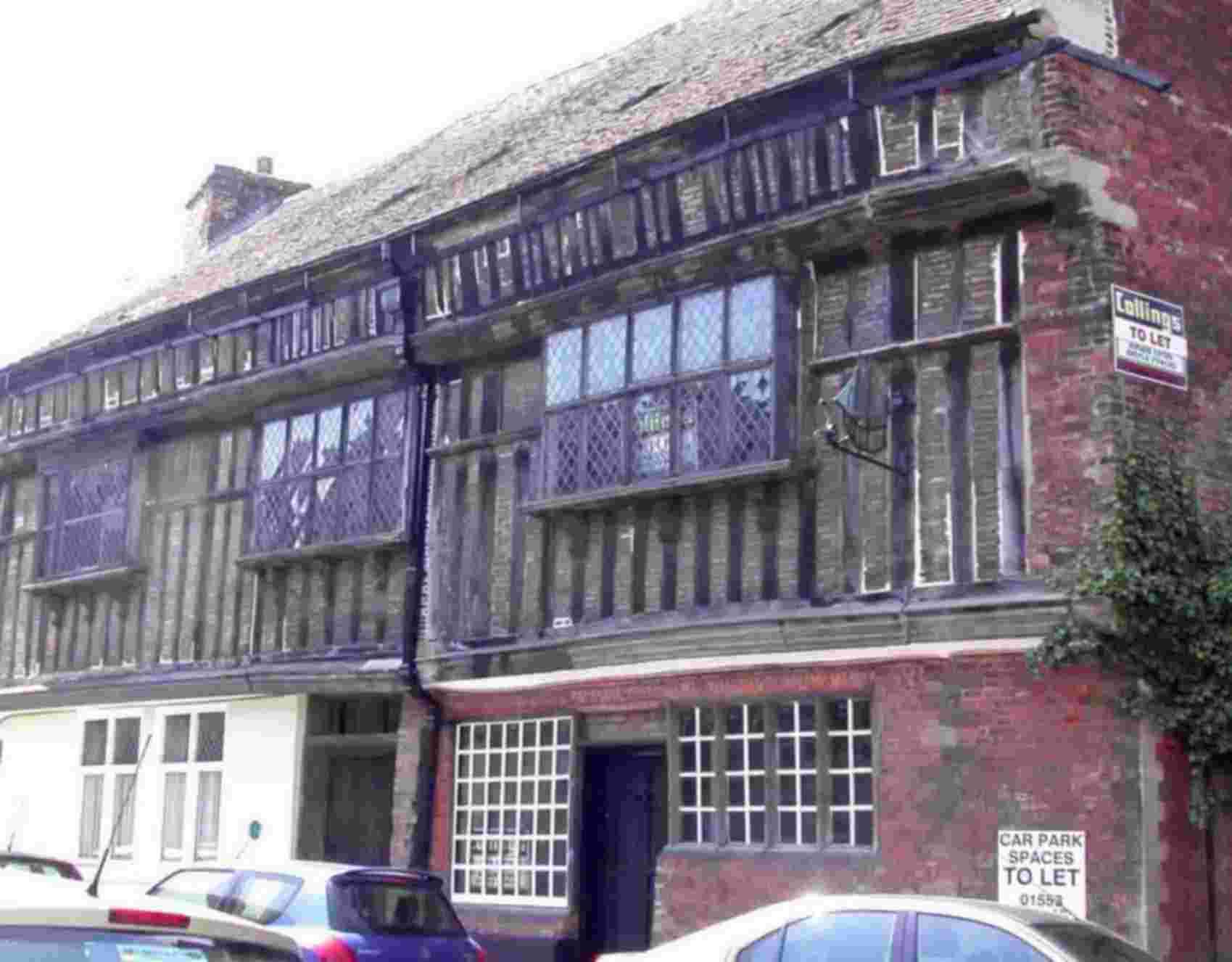
What a surprise we had on arriving at this beautiful half timbered building in Bridge Street. The weighing machine was just behind the door taking up twenty feet of the passageway. The door was unlocked and there it was just above our heads. It did not block the way as it was attached to the ceiling. The beam was our main survey but an added bonus came when we found that a cellar was beneath our feet containing other items belonging to the machine. ‘Can we get into the cellar?’ ‘Yes but I will have to leave you here whilst I get the key.’We looked at each other in amazement as we love ancient buildings and our minds boggled with the thought of what was down there! We did our measuring and took many photographs of the beam. The clank of a large key in a lock and creaking hinges and we were on our way down stone steps.
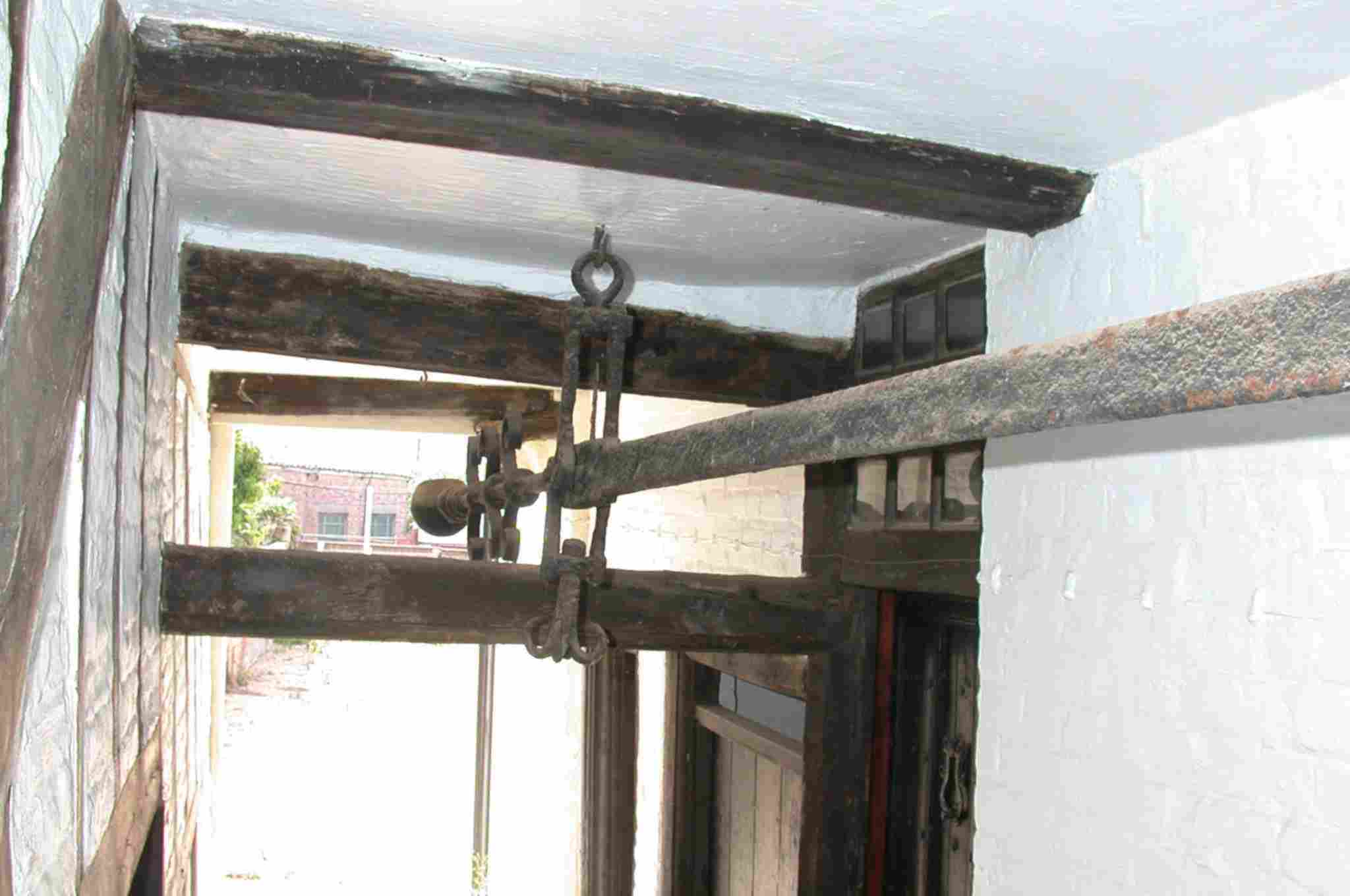
The beam pictured left is in the passageway of the of the building through the first door in the red brick section. It is possible that one would require permission to view it. When we did the investigation no signs of a makers mark could be found on any part of the steelyard. What is called 'the poise' would be slid along the arm which faces the front of the photograph. It is marked in a very similar way to a rule and the poise would have been drawn to a point where the weight would be calculated. See drawing below.
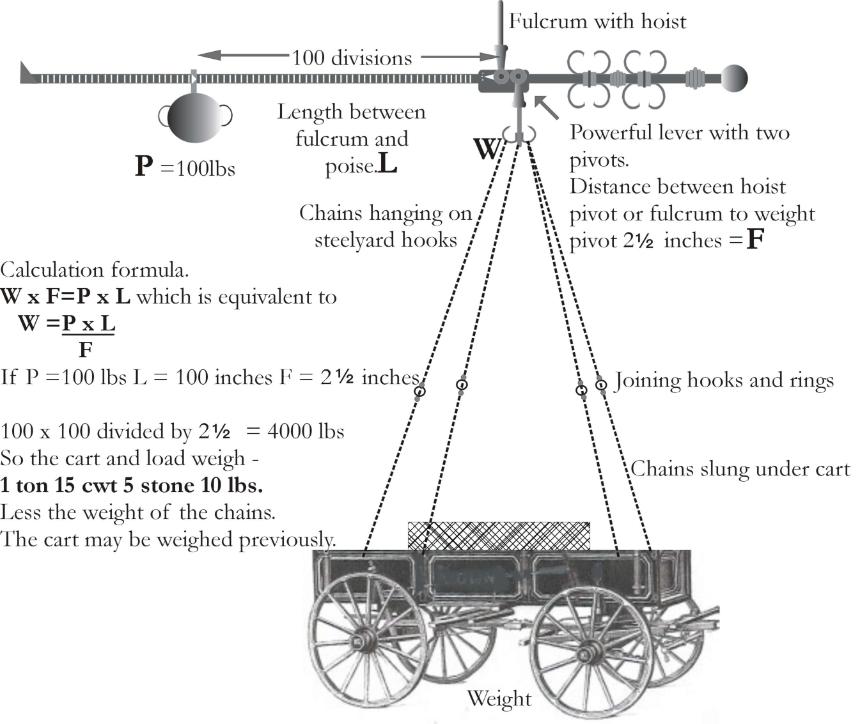
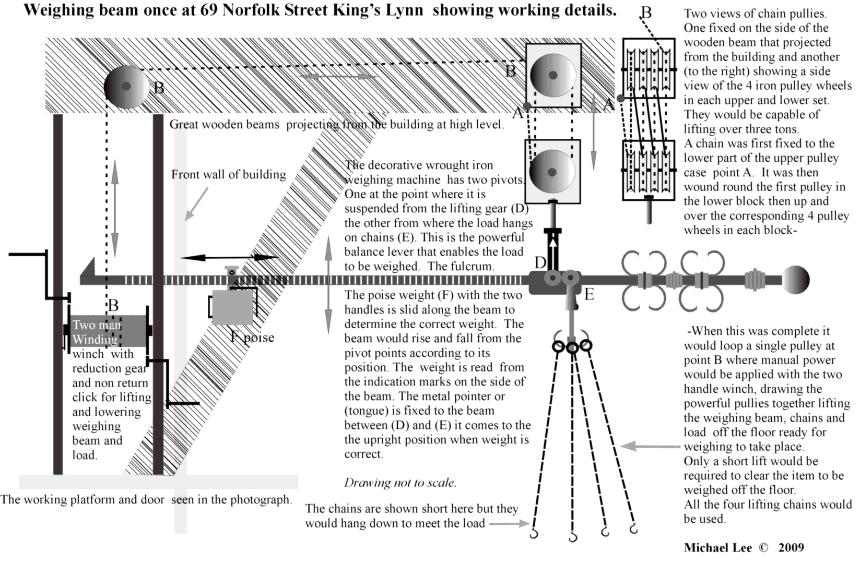
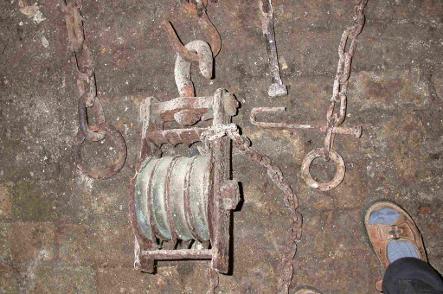
Just one of our photographs of the items found in the cellar under the ancient building.(Large pulley wheels and chains.) The pulley completely made of wrought iron. The wheels are now rusted together but look as if they could be restored.
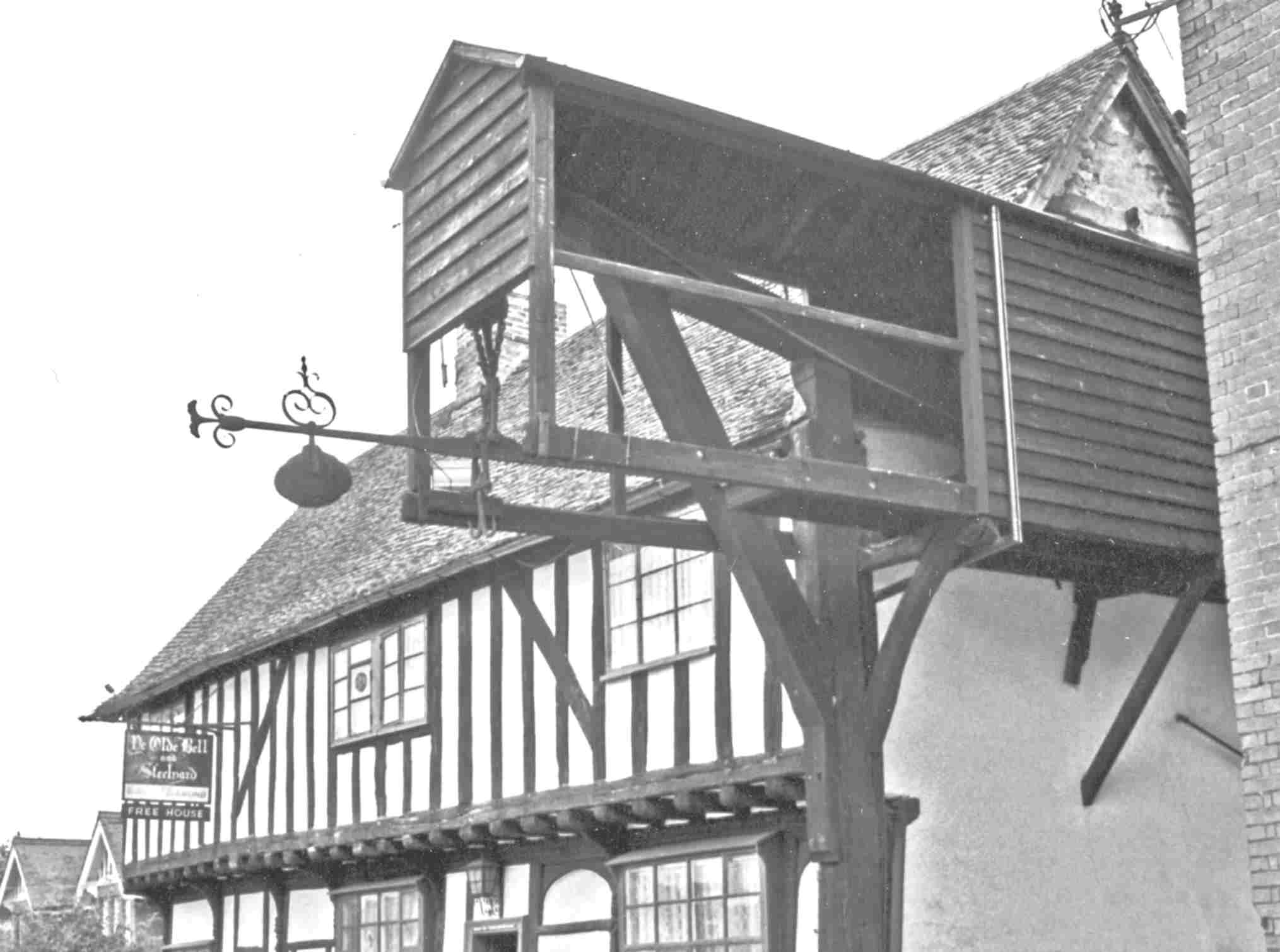
'Ye Old Bell' steelyard' Woodbridge.
Looking at the wooden framed building it seems that only the finest of Inns were chosen for the installation of these weighing machines.
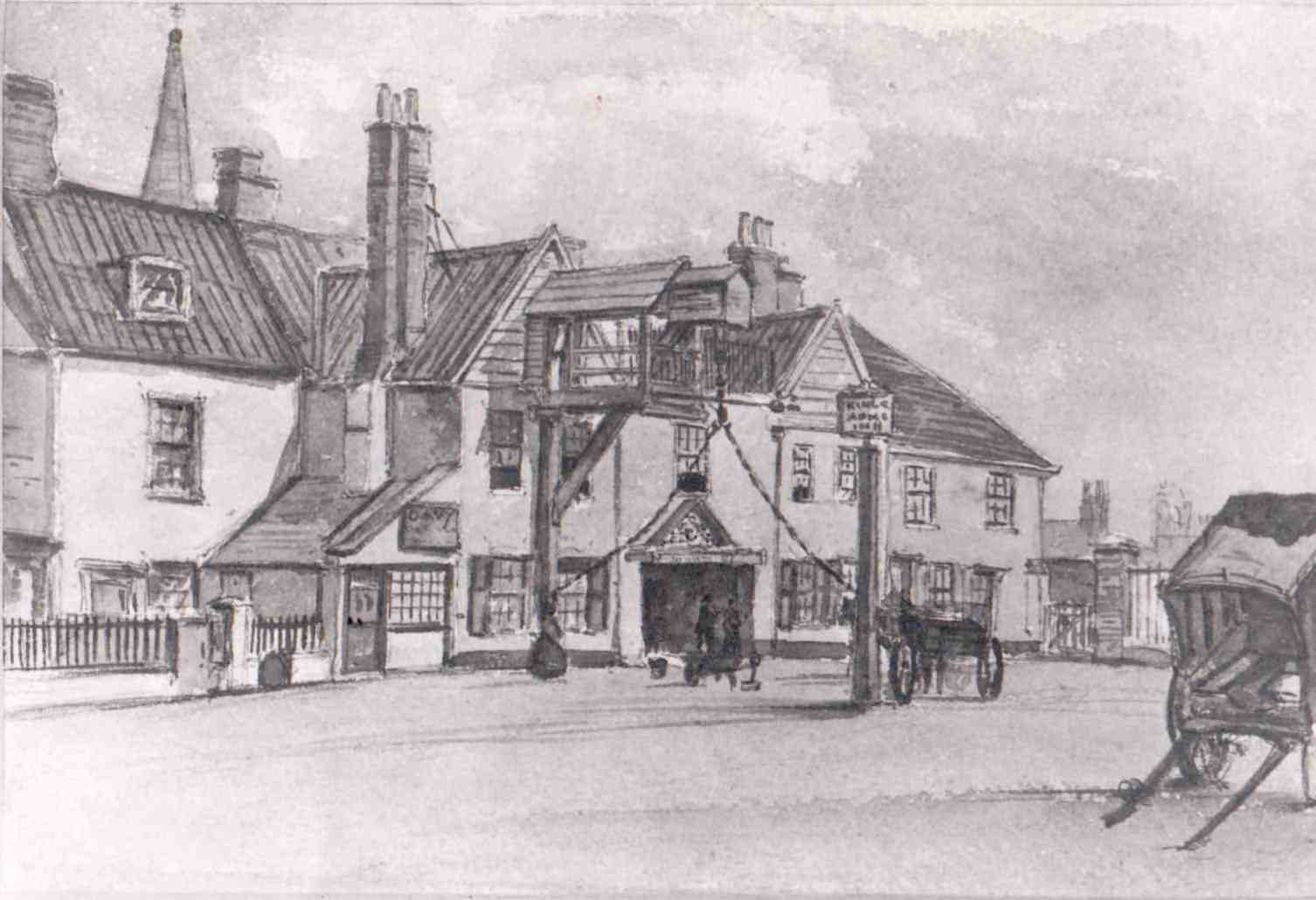
Kings Arms' steelyard' Yarmouth.
We must also note that all the steelyards have been found near to the coast. Although The Kings Arms Yarmouth is still a fine building nothing of the ancient building shown left remains.
As there are only a few steelyards it is very likely that all were built to a similar specification.
Here the lifting chains are attached to two poles in between which the item to be weighed would have been drawn.
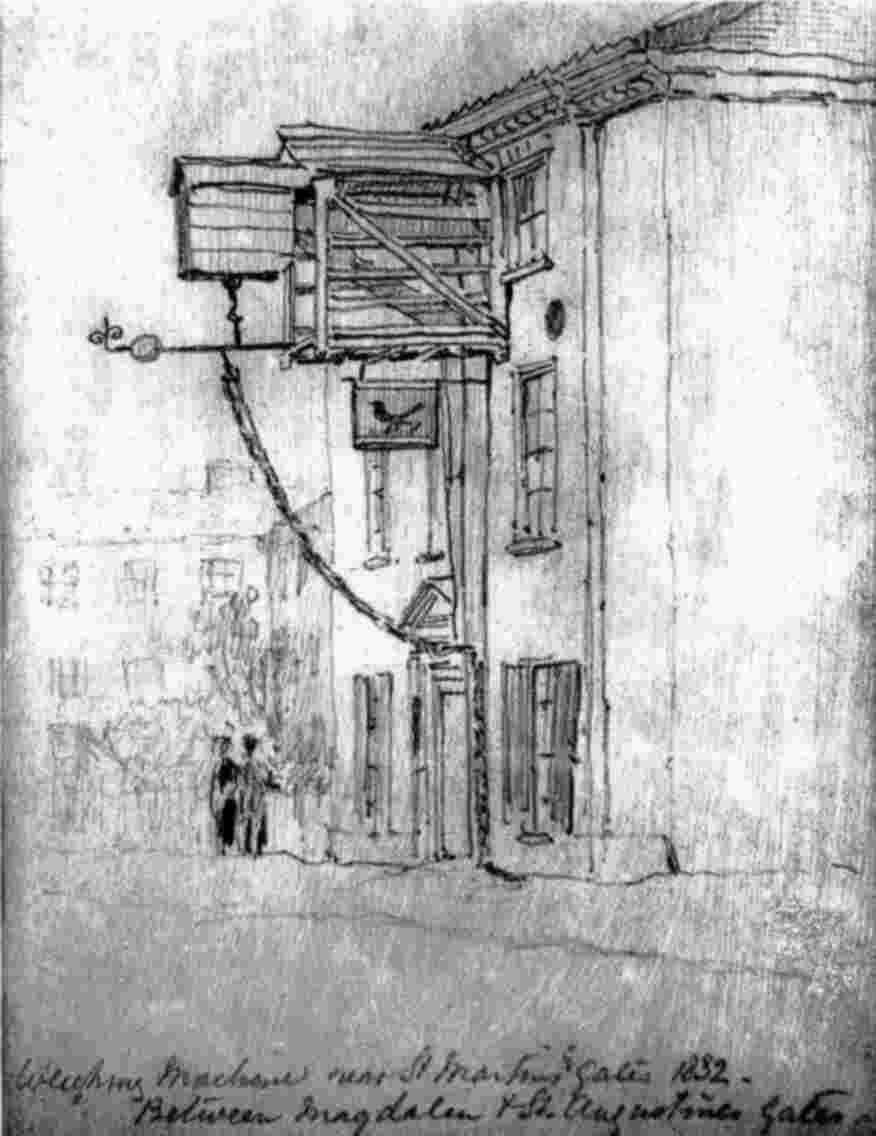
The Magpie Inn' Steelyard' Norwich.
King Lynn steelyard was known as 'the hanging chains' . It is very obvious from this drawing where the chains are attached to the side of the entrance of the Inn.
All of the balance weights on the front of the arms have wrought iron decoration. In this case it may hve been in the shape of the Magpie.
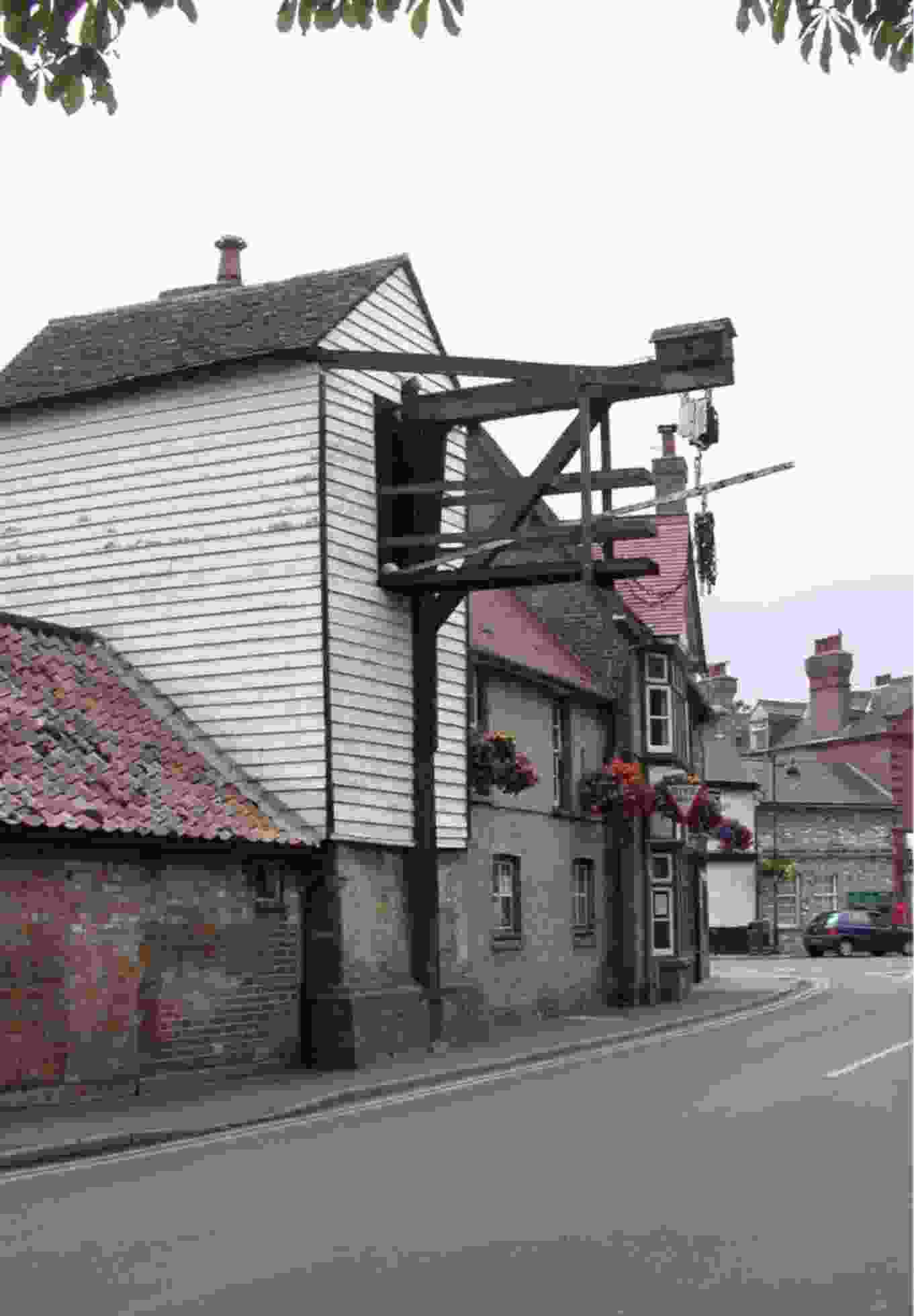
'The Fountain Inn steelyard' at Soham, Cambridgeshire. Although it is no longer used it is in working order.
A friend made the comment that people living in Soham would take very little notice of such an ancient machine as for them it had always been over the open road.
The steelyard is missing its balance weight on the front of the arm. It may have been struck by passing traffic.
Extensive cleaning an restoration work was done by the landlord of the Fountain Inn, Mr. John Hartley. Unfortunately late in 2017 a high lorry crashed into the weighing platform causing considerable damage. John hopes that repairs will take place in the near future.
This is a Grade II listed building.
The photograph below left by John shows the winding gear for lifting. It has two handles. On the left side you can just see the main beam reaching out over the street outside. Directly below. Photograph of a Model T Ford weighing over one ton with what looks like four people aboard. It has been lifted off the ground. At this point weighing can take place. The steelyard counterweight although slightly drooping is still attached.
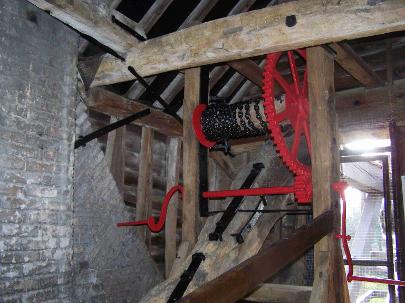
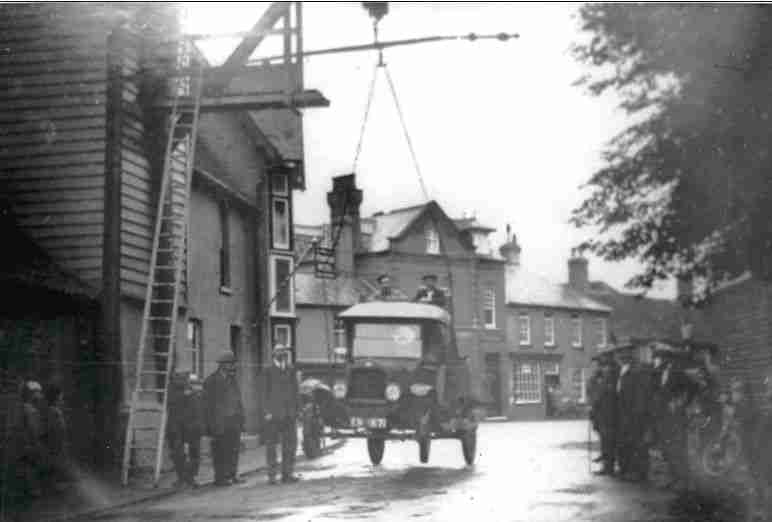
The reason for this extensive research was to find what was weighed on these steelyards. Was it possible that church bells had been one of the items and here at Soham. This was case.
The following is a Church Wardens account of the bells.
In 1709 some, or all of the bells were taken down and repaired:-
Drink to the value of £1/8/0 was consumed at '' John Goldsberoughs for ye ringers, and with ye bell founder, '' and £1/6/0 was payed Edmd Rumbelow for drink and for '' the use of his steyliards to weigh the bells by.'' The journey was not completed without some little difficulty, for Mr Plummer was allowed half-a-crown towards the repair of his waggon shafts which were broken on the way to Fulbourne.
Fenland Notes And Queries. In the counties of Huntingdon, Cambridge, Lincoln, Northampton, Norfolk and Suffolk. Edited by Bernard Saunders RR. History Society Vol 1 1891. P 367.
Both the Goldsberough’s and Rumbelow’s were residents in Soham at the time. The shafts must have been put under some pressure during weighing!
The writer’s theory that steelyards were used for weighing bells is proven. We may be able to apply the earlier date of 1709 to the other machines. It seems quite certain that they were produced in the 17th century for general use such as Hay-Weighers.
Henry Penn Peterborough bellfounder may have used an equal beam weighing machine with stone weights similar to that found at Ewerby church in Lincolnshire for small bells. But for large bells weighing half a ton and over a steelyard would have been the answer. We must keep looking.
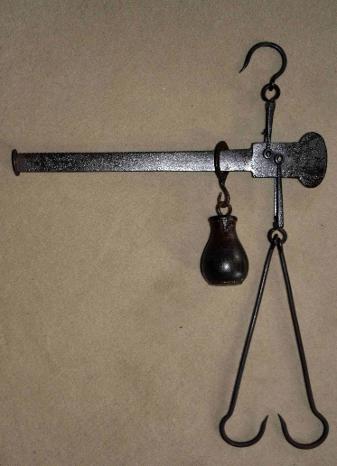
Final steelyard in the writers study
Avery Imperial 65* steelyard. Dated about 1830 and made of wrought iron. It is 16 inches wide 27 inches high and will weigh a load of 65 lbs. The poise, shaped like a small pot, slides along the beam which has 65* small notches cut into the top edge. None of the large steelyards shown above has a makers mark. It is possible that the original owners of Avery, at least three could have been the makers.
Acknowledgements.
David Higgins and King’s Lynn Preservation Trust. The late Edward Milligen Beloe founder of Greenland Fishery Museum. King’s Lynn Library. The Norfolk Street file, mainly photographs. King’s Lynn Museum and Timothy Thorpe Curator. The late A. L. Dorer, secretary of the Greenland Fishery Museum 1940. Ipswich Library for the help in finding location of documents. Ipswich Records office for their kind attention and especially Mrs. S. Looker. John Doran Curator Avery Weights and Scales Museum for drawings of the Kings Arms Yarmouth and the Magpie Inn Norwich with notes by Mr. A. Batstone, Landlord of Ye Olde Inn & Steelyard, Woodbridge. John Hartley Lanlord of The Fountain Soham.
Photograph of 69 Norfolk Street. Excellent site.www.norfolk pubs Their Aim is to provide an ever expanding record of all Norfolk Public Houses and many of their Licensees. The Lynn Advertiser for articles included on the above site. Norfolk and Norwich Millennium Library. Daniel Neal of Manchester mathematician for the help in the drawing equation . Fenland Notes and Queries 1891. Henry Penn Bellfounder, by Michael Lee.